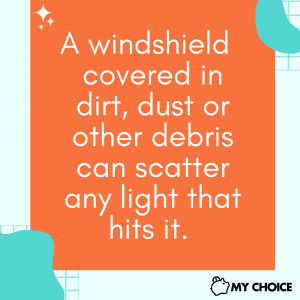
Driving at night can be challenging regardless of how many years of experience you have with a motor vehicle. This is because a lack of light can result in reduced visibility and issues with depth perception, increasing your risk of getting into an accident.
Besides the risk of bodily harm to yourself or others, getting into an accident will likely also result in your auto insurance rates going up. Let’s take a look at what you can do to overcome these challenges and avoid getting hurt while travelling after the sun goes down.
Make Sure That the Exterior Lights Work Properly
If you are driving around a big city like Toronto, your path is likely to be well lit. However, if you’re travelling in a rural area, your car’s headlights may be your only source of illumination while driving at night. Without functioning headlights, you may not be able to see an object, animal or person in your path before it is too late to avoid it.
It’s also worth noting that the light given off by your vehicle can serve as an early warning to others that you are in the area. This may give pedestrians enough time to move to the side of the road or take other steps to avoid a collision. It may also give other drivers enough time to turn off their high beams so that they don’t blind you as you approach.
Therefore, it’s important to inspect them before you leave home, work or school for the evening. It’s also a good idea to inspect your car’s brake lights and turn signals on a regular basis. If these items aren’t working, it can be harder to communicate your intentions to other drivers, which could increase your risk of getting into an accident.
A Clean Windshield Is Easier to See Through
A windshield that is covered with dirt, dust or other debris can scatter any light that hits it. This can make it extremely difficult to see other people, objects or cars that might be in your vehicle’s vicinity. Fortunately, a quick trip to a car wash facility can ensure that your car or truck is clean enough to drive safely.

Move Your Eyes at Regular Intervals
When you’re driving, you’re supposed to keep your eyes on the road at all times. However, it’s not a good idea to keep them fixed on one spot for an entire drive. Instead, you should pick a series of spots to focus on while driving to avoid eye strain.
For instance, you could shift your gaze from the left side of the windshield to the right side every few seconds. It’s also a good idea to glance at your side and rear mirrors every so often to ensure that you don’t have any blind spots.
If you see headlights coming from the opposite direction, you should avert your gaze to avoid staring directly into them. Staring directly into a headlight could cause temporary blindness or other vision issues. In the event a vehicle is following yours at a close distance, alter your rear mirror so that any light that it produces doesn’t reflect off of it and into your eyes.
Don’t Skip Your Yearly Eye Exam
An annual eye exam allows you to find out about minor vision issues that might impact your ability to drive safely at night. If any issues are found, your doctor may suggest that you start wearing glasses or contact lenses. Alternatively, you might be advised to avoid driving while the sun is setting. For those with vision issues, your eyes might have more trouble tracking objects during periods of low light as opposed to periods of pure darkness. Therefore, it may be safer to avoid travelling during the transition from daytime to nighttime.
Do Not Attempt to Drive If You’re Tired
According to most collision statistic surveys that are done, the period between midnight and 6 a.m. is when you are at the highest risk of being involved in a crash. This is because your body is designed to be asleep at night as opposed to performing tasks such as driving a car.
Therefore, you may be at a greater risk of experiencing the effects of drowsy driving even if you sleep during the day. These effects may include a slower reaction time or a harder time concentrating on where you are going.
If you haven’t slept during the day, driving at night can be almost as dangerous as driving while under the influence of alcohol. Research has shown that driving after staying awake for 20 hours or more is equivalent to doing so with a blood alcohol content of about .10%.
In the event that you start to feel tired while driving, it may be a good idea to pull to the side of the road to take a nap. If you have a passenger in your car who has a valid license, ask that person to drive while you nap. Alternatively, you can drink a cup of coffee or a small bottle of soda to give yourself a temporary boost of energy.
Be on the Lookout for Drunk or Impaired Drivers
You are more likely to encounter drunk or impaired drivers at night as this is when they tend to leave bars or restaurants after drinking with their friends or colleagues. This is especially true on Friday or Saturday nights when people tend to stay out later because they don’t have to work the next day.
Signs of an impaired driver include an inability to stay in one lane and irregular braking. Impaired motorists are also at an increased risk of going the wrong way on a road or highway. If you suspect that another motorist is impaired, you should pull to the side of the road and call the police.
If you are under the influence of drugs or alcohol after a night out, do not drive your vehicle home. Instead, you should call for a taxi or ask another sober person to take you home. It’s typically acceptable to leave your vehicle at a bar or restaurant for a few hours until you are able to safely come back and drive it home.
Endnote
Driving at night presents a variety of challenges that you probably won’t encounter during the day, and this is often true even in areas that have adequate artificial lighting. Therefore, it is critical that your vehicle is clean and in good working condition before you begin an overnight journey. It is also important that you are sober, awake and aren’t experiencing any vision issues that might make it difficult to drive in a safe manner. Be sure to also check our tips on how to drive on highways in Ontario.








